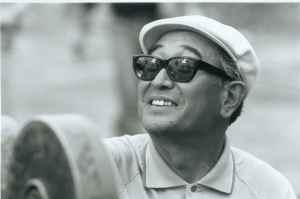 A student of mine recently asked, apropos of nothing, “What is your second favorite Kurosawa movie?” I was pretty certain I had never mentioned the Japanese director at any point in the two-day class, but I had to ask: “Did I make a Kurosawa joke or something?” He said no, this was just one of his favorite left-field questions for “educated” people. “I’m assuming,” he added, “that Seven Samurai is your favorite.”
A student of mine recently asked, apropos of nothing, “What is your second favorite Kurosawa movie?” I was pretty certain I had never mentioned the Japanese director at any point in the two-day class, but I had to ask: “Did I make a Kurosawa joke or something?” He said no, this was just one of his favorite left-field questions for “educated” people. “I’m assuming,” he added, “that Seven Samurai is your favorite.”
Well maybe yes and maybe no. This is a dangerous question to ask me, coupled with a very tenuous assumption. Of course Seven Samurai is great, but is it better than Rashomon? And let’s face it: the whole idea of rankings is ridiculous when you’re talking about masterpieces. If a film is perfect, how can you say that it is better or worse than another perfect film? Picking a favorite becomes a matter of mood, and I am just about always in the mood to watch me some Kurosawa. The best I could do to answer the man’s question was to pick my top five, in no particular order.
Ran (1985) Yes it’s long at 162 minutes, and yes it takes a while to get going. And no it doesn’t offer much in the way of swordplay. But a finer film has never been made from King Lear, and Kurosawa’s version is a seething cauldron of betrayal, heartbreak, and madness. Mieko Harada as Lady Kaede owns every frame she’s in, and Tatsuya Nakadai is an unforgettable Lear. The scene where he walks through the burning castle, oblivious to the rain of arrows, is breathtaking, a pre-CGI one-take spectacle where the set literally burns down around him.
Throne of Blood (1957) is Kurosawa’s other great adaptation of Shakespeare, in this case Macbeth. It’s a dirty little secret among Shakespeare-lovers, but The Bard is often better in translation, and modern English subtitles over Japanese is actually a lot clearer than the 400-year-old English original. Not that Kurosawa was ever overly dependent on dialog to tell a story; like John Ford, he came up in the silents and learned how to block out a scene visually, only adding dialog when it furthered the story. There’s no shortage of bloody action in this one, and a terrific performance by the great Toshiro Mifune.
Rashomon (1950) is the one that every film student has to watch, thanks to its experimental approach of telling the same story through four different perspectives. It remains a profound reflection on the vagary of experience and the elusive nature of truth. Yes, but what really happened? The answer is unknowable, even if (or especially if) you were there.
Yojimbo (1961) is one of those films that’s been remade so many times it seems derivative, but which was actually the original. A stranger comes to town in the middle of a war between two rival factions. A mercenary, he plays one side against the other until just about everyone is dead. As played by Mifune, the title character is a rude-boy ronin like no other, with a rough sense of humor and poor personal hygiene. There’s enough swordplay for three movies, including one of the best duels of all time. And if you still want more, there’s a sequel, Sanjuro.
Seven Samurai (1954) is Kurosawa’s best-known film, and possibly his best, a monumental epic that nearly bankrupted the studio when it was made. If for some strange reason you’ve never seen it, it’s the film that The Magnificent Seven was copied from, about a band of scrappy mercenaries who defend a village against an army of bandits. Toshiro Mifune shines as the Samurai wannabe who’s all bravura and no skill, and the climactic battle in the rain is one of the greatest fight scenes ever put on film. If you get a chance to see it on the big screen, don’t miss it – Seven Samurai may be the greatest-ever example of black-and-white cinematography.
Honorable mentions to Hidden Fortress, Red Beard, Kagemusha, and the other great films that didn’t make this list. Ask me some time about my seventh favorite Kurosawa film and I’ll think about it.


